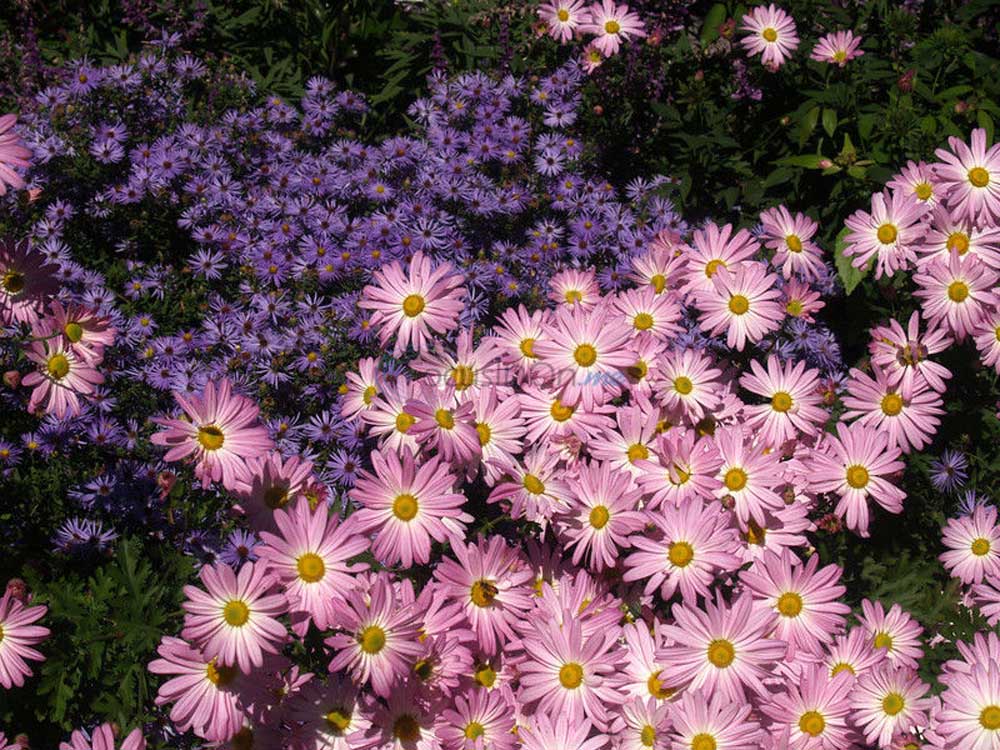Fall bloomers measure length of night to know when to bloom
Published 11:06 pm Wednesday, November 6, 2013

- Courtesy Country Girl mum, a pass-along favorite, puts forth its beautiful blooms in the fall.
Some of the most beautiful blooming plants wait until the shorter days of fall to erupt with colorful flowers, a last glorious display before the first freeze of winter arrives to end it all. Flower color is always better, more vibrant during the cooler fall weather, too. The summer sun and heat often cause blooms to fade quickly, and colors seem to bleach under sunny Texas skies.
But why do some plants wait until now to flower, while others bloom from spring through frost? The answer is fall blooming plants are measuring daylength, and at a certain point, they initiate flower buds and then bloom. Scientists years ago unraveled part of the mystery, when they discovered that these plants, termed “short day plants” because they flower during the shorter days of fall, actually bloom in response to longer nights.
Chrysanthemums and poinsettias are bedding and floral plants for fall color, and they are short day plants. Greenhouse growers can force them to bloom earlier in the growing season by giving them an artificially long night. In late afternoon, an entire greenhouse will be covered with blackout cloth to exclude all light, and uncovered again in the morning. They will do this for several weeks to initiate flowers.
Scientists figured out that the plants were measuring the dark cycle, and not the length of daylight, by interrupting the dark cycle with short bursts of light. That interruption kept the plants green and vegetative, delaying the initiation of bloom.
What this means for gardeners is that if you have bedding mums in your garden, and wonder why they don’t bloom, or bloom extremely late in the year, you may have a street or security light nearby that is interrupting the dark cycle.
Kalanchoes and Christmas cactus are two other short day florist plants popular for the holiday season. If you want them to re-bloom, make sure they get at least 14 hours of uninterrupted darkness for several weeks, followed daily by normal lighting. Keeping them cool during this time also helps the process.
I like fall blooming plants because they typically put on a spectacular show at a time when summer annuals are fading and dying, bridging the floral gap between summer and cool season bloomers. Dee Bishop, in her “In Our Garden” column, today is featuring Mexican mint marigold and she recently featured pineapple sate, a couple of wonderful fall-blooming short-day plants.
Here are a few other short-day plants that will add spectacular color to the fall garden:
Confederate rose (Hibiscus mutabilis) is a pass-along perennial mallow that gets really big (up to 12 feet tall by 8 feet wide) before it gets covered with pink flowers reminiscent of roses or cotton flowers. Give this plant plenty of room, and place toward the back of a flower bed. They root easily from cuttings.
A longtime favorite of mine is Mexican bush sage (Salvia leucantha). It has handsome gray-green foliage during the spring and summer, but bursts forth with long spikes of fuzzy purple flowers, tipped in white in late summer and fall. This is a very drought tolerant, sun-loving perennial (also a Texas Superstar) that looks great when planted alone, or try planting in combination with ornamental grasses. Salvia Mexicana is another pretty sage that you must wait until fall for its attractive blooms.
Autumn aster (Aster oblongifolius) is, as the name implies, a fall bloomer, and an old-fashioned variety that is reliable for our area. Most asters don’t persist as well as this one. Its purple flowers make it a great companion to the yellow blooming Mexican mint marigold (Tagetes lucida) and also country girl mum.
Country girl is another pass-along favorite, and is a popular garden mum. It is hardy and free flowering, with large, rosy-pink petals.
Phillippine violet (Barleria critata), candy corn plant (Cuphea micropetala), skyflower (Duranta), shrimp plant (Justicia brandegeeana) and goldenrods (Solidago spp.) are some other perennials for sunny garden beds that bloom heavily in the fall in response to shorter days and longer nights.
For the shade, look for Odontonema strictum, better known as Firespike. The lush, dark green foliage grows to about 4 to 6 feet tall, and in fall shoots forth long spikes covered with bright red tubular flowers. This Central American native is easily grown, is root hardy except in the coldest of winters (I have not lost mine for more than 22 years), and tolerates full shade. The flowers are favorites of migrating hummingbirds and butterflies.
Another shade-loving fall bloomer are the toad lilies (Trcyrtis spp.). I don’t know where the term “toad” came from, but these short, bushy perennials bear attractive purple spotted flowers all along the stems or at the end of each stem, depending on variety. A nice addition to the shade garden.
Keith Hansen is Smith County horticulturist with the Texas A&M AgriLife Extension Service. His web page is http://EastTexas Gardening.tamu.edu. His blog is http://agrilife.org/etg.






